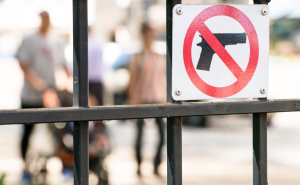Gun Violence Prevention Experts Release Model Policy Guide for Safe Storage Laws
A team of experts from the Johns Hopkins Center for Gun Violence Solutions at the Bloomberg School of Public Health have crafted a new tool for lawmakers to write effective safe firearm storage laws.
The Safe Storage Model Policy Guide outlines 20 recommendations to help lawmakers craft the most effective Safe Storage laws rooted in public health research and practice.
Full Guide Recommendations Checklist Executive Summary
Safe Storage laws set requirements for the way firearms are stored. These policies protect public health and safety by preventing access to firearms by children or unauthorized persons. As of March 2025, twenty-six states and Washington, D.C., have some form of these laws in effect. However, these policies vary widely in scope, effectiveness, and implementation across jurisdictions.
“Lawmakers now have a step-by-step plan to create the most effective Safe Storage law for their state,” says Tim Carey, JD, law and policy advisor at the Center and lead author of the guide. “This guide takes the guess work out of writing bills that protect public health and safety by codifying core tenets of responsible gun ownership.”
The guide focuses on four main topics: when firearms should be stored; how firearms should be stored; liability and public awareness; and data and accountability. When used together, these components can play a key role in laws shown to prevent firearm suicide, homicide, unintentional shootings, and other firearm-related injuries.
Research from 2020 found that strong Safe Storage policies are associated with an estimated 12 percent reduction in youth firearm suicides (among children ages 0—14) and a 13 percent reduction in unintentional deaths and injuries among the same population. Researchers have suggested between 6 and 32 percent of all youth firearm deaths could be avoided by strong Safe Storage policies.
According to a nationally representative survey of U.S. gun owners in 2016, more than half of gun owners reported they did not safely store all their firearms.
“Far too many gun owners are not properly storing their firearms when not in use,” says Cass Crifasi, PhD ‘14, MPH, co-director of the Center and contributing author of the guide. “As gun owners, we have a responsibility to store our firearms in a safe and secure manner; it is an effective solution to keep unattended firearms away from children or unauthorized people.”
Safe Storage laws represent one component of a comprehensive public health approach to gun violence prevention. Policymakers now have the resources, research and polling data they need to pursue laws that prioritize public safety. Policies like this save lives across the country.





